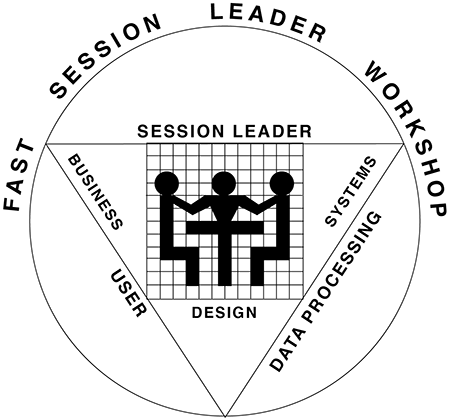July 1999

Getting Facilitation Accepted | Gary Rush, IAF CPF
Introduction
When I began in the facilitation industry 16 years ago, getting organizations to understand and accept using facilitators for meetings was difficult. It has improved some but it is still a recurring question in my classes - "How can I get my company to use Facilitation?"
First, Some of the Improvements
There are two major reasons that acceptance of facilitation has improved:
- Facilitators have become more process consultants, thus adding value. They are being recognized for adding value, too.
- Our organizational culture in North America and Northern Europe has changed from a hierarchical one to a flatter, more consensus based culture.
These two factors have helped acceptance. However, acceptance is not guaranteed, nor easy.
Some of the Problems
The major problem is that it is still new - it's different. Different can be good - but not everyone agrees in the beginning. Resistance comes because:
- Managers may feel that they lose control. This is especially true for project managers (often the most resistant). The facilitator looks like he or she is in charge (sometimes we wish!).
- Facilitators often sell the concept of the workshop rather than the overall process. That is like programmers selling their users on allowing them to program using JAVA or C++. They are selling the wrong thing.
- Time. Pretty much self-explanatory. Especially with mergers and current competition, how do you find the time to send key people to a workshop for 1, 2, or even 3 days at a time?
- I still hear the old comment; "A camel is a horse developed by committee." Some people still think that one person can develop better ideas than groups.
Now for the Suggestions
No silver bullets, but I have found some tactics and arguments that work.
- Ensure that the project manager stays in charge. This person is your client - let it be known and keep it clear. Even when providing process consulting - it's their project, not yours.
- Stop selling "Facilitation" or "Workshops". These are tools to enable the process. Facilitators are added value to a process such as strategic planning. We don't facilitate or run workshops for their own sake. Sell the entire process - e.g., "Our strategic planning works this way." The clients want the results and are less concerned with the method. Be a process consultant.
- The last two are corrected the same way. I can develop ideas faster than a group. I just can't get the group to accept them. It is faster for the group to develop ideas because they accept their ideas faster than they accept mine. Their time is more productive in the workshops than delegating to anyone else, then trying to understand it. Besides, I'd rather have the camel in a desert than a horse.
Summary
The best way to sell facilitation is success. Once a group participates in a facilitated process, it will be difficult to change back to other ways. Find someone willing to try it and "wow" them with success. Be a process consultant and work the entire process - not just the tool. ![]()
ICEBREAKER
I have used the following icebreaker a couple of times. Each time I varied it to accomplish a specific reaction. Use it for planning workshops or whenever you need to get people to uncover something about themselves or their organization. Do the following:
- Write the names of the participants on individual slips of paper. Place the slips into a cup, bag, or hat.
- Have each participant draw out a name - not their own.
- For that name, each participant writes a newspaper headline describing where that person is after X years. After the headline, have them write the lead paragraph. Give them 15 minutes.
- When done, each participant reads out their headline and paragraph to the group.
This is a safe exercise in team building. Groups who resist "warm and fuzzy" exercises don't seem to resist this exercise. It uncovers views of each member when the group knows each other (e.g., a management team). It is quite useful in merger situations - it helps to uncover buried tensions in a safe manner. A variation on the above is:
- Break the group into teams.
- Have each team write a headline and lead paragraph describing their organization in X years.
- To read it back, each team introduces the members and then reads the headline and paragraph. Capture any recurring themes from the teams.
This works well as a way to develop vision statements. Used in the introduction, you can use this throughout the workshop. Try the exercise and let me know how it works. ![]()

